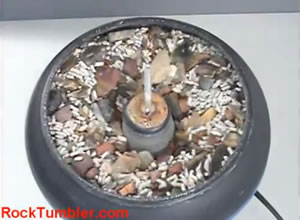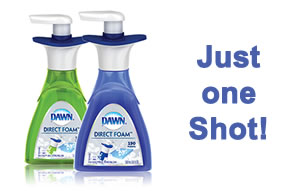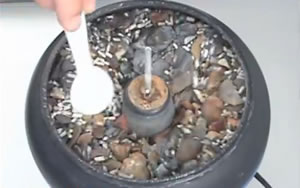Operating Thumler's UV-10 Industrial Rock Tumbler
The Key to Success is the Right Amount of Water
This video shows how we operate the Thumler's UV-10 rock tumbler. The key to success is adding just the right amount of water. You want just enough water to make the grit stick to the rough and media in the bowl and lubricate them for a vigorous tumbling action. Too much water will wash the grit from the rock.
It is very important to check a vibratory tumbler at least two or three times per day. You will need to add a few tablespoons of water to replace what evaporates and to thin the rock mud that will develop in the barrel. We provide complete instructions for running this machine below the video.
ATTENTION: For tumbling rocks, you must use the "Industrial" version of the UV-10 tumbler. The "Standard" UV-10 is made for tumbling brass shell casings and will not stand up to the stress of a heavy batch of rocks. The industrial model costs a little more, but that is what you need for rocks. See our article about how to tell these tumblers apart and their operational differences.
Instructions for Operating the UV-10 Vibratory Tumbler

We always run at least twenty percent ceramic cylinders in the UV-10 tumbler. These act as roller bearings that improve the tumbling action. They also cushion large rocks to keep them from hammering the bowl and deliver grit to irregular rock surfaces. If we are tumbling a lot of large rocks or delicate materials such as obsidian, Apache tears, or glass, we add up to 50% ceramic cylinders.
Getting Started with the UV-10 Vibratory Rock Tumbler
The first thing that we do is tighten the wing nut that holds the barrel on the machine and then load the tumbler barrel. The Thumler's UV-10 vibratory rock tumbler is designed to process about ten pounds of material (that ten pounds includes the rough rock plus any ceramic media that you decide to use). The machine operates best when the barrel is at least 3/4 full of material with the motor running.
To obtain the best tumbling action in the barrel, we always run our rocks with at least ten to twenty percent small ceramic media. The ceramic cylinders act as roller bearings in the tumbler barrel and improve the tumbling action of the rock material. They also keep larger pieces of rock from hammering the bowl and making a lot of noise.

Thumler's UV-10 industrial version is designed with a heavy duty bowl and motor for tumbling rocks. The blue band on the barrel indicates that it is an industrial version bowl.
| How Much Grit and Polish in a UV-10 | |
| Medium (150/220) | 6 Tbsp |
| Fine (500F) | 3 Tbsp |
| Polish | 3 Tbsp |
| Even though the UV-10 can process nearly 10 pounds of material, it requires just a tiny amount of grit or polish. The first step is run with six tablespoons of medium grit (grit that can be anywhere between 150 and 220 mesh). The second step uses three tablespoons of fine grit (500 or 600 mesh). The polish step requires just three tablespoons of polish. | |
Adding Grit
The Thumler's UV-10 tumbler uses a lot less grit per pound of rock than a rotary tumbler. We really enjoy this because it saves a lot of money.
For the first grinding step we add about six ounces of medium silicon carbide grit to a barrel that is about 3/4 full. We use our medium (150/220 ungraded) silicon carbide grit. Similar sizes of grit (such as 180 ungraded grit) will work fine.
We do not use coarse grit in our UV-10 vibratory tumbler. The grit particles are too large to cling to the rocks. We always use medium grit for the first grinding step(s).
Adding Water
After you add the grit you can turn on the machine. Now start adding water, one tablespoon at a time. Take your time adding the water and watch how the grit clings to the rock. Your goal is to have just enough water to make the grit stick to the rock and produce a nice tumbling action in the barrel. If you add too much water the grit will not stick to the rock. Instead it will wash off and fall to the bottom of the barrel. If the grit starts washing off or if you see water splashing then you have added too much. Add water slowly to avoid this.
After adding the water, place the lid on the machine and tighten the wing nut securely.
[Note: It takes a little experimentation to learn how to use this tumbler. The amount of water needed varies. The proper amount depends upon the size, shape and volume of rocks in the barrel. Don't hesitate to experiment and keep records!]
Check 2 to 3 Times Per Day
It is very important to check the tumbler at least two or three times per day. As the machine runs, some water will evaporate and a thick rock mud will start to accumulate in the bowl as the rocks are worn down by the grit. This rock mud will slow the tumbling action. When you see this add water one tablespoon at a time. You want to add just enough water to dilute the mud and restore a vigorous tumbling action. Don't add too much!
How Long to Tumble?
We run this first step for about three days. Then we rinse the rocks in a plastic colander over a large plastic bucket. (Don't allow the rock mud to go down the drain. It will clog your plumbing!) We then inspect the rocks to see if they have been smoothed to our satisfaction. If they need more smoothing, we rerun in medium grit for about three more days. If you are really picky about producing perfectly smooth rocks or you are tumbling hard, tough materials this first step might be run two or three times.

We have great results using TXP aluminum oxide polish in the UV-10 tumbler with agate, jasper, petrified wood and similar rocks. We also try it first for any other material that we tumble. This is one of the most inexpensive polishes and it does a fantastic job. So why spend more money?
Fine Grit and Polishing Steps
After you run the rocks in medium grit it is time for the fine grit, sometimes refered to as pre-polish. For pre-polishing, we run the rocks two or three days in 3 ounces of fine 500 or 600 mesh silicon carbide grit and enough water to make the grit stick to the rocks. We continue to check the tumbler two or three times per day and add water when needed. Two full days is usually enough unless you are tumbling really tough materials. Clean the rocks and barrel thoroughly after the pre-polish. Remember to rinse the rocks in a colander over a plastic bucket and don't let used grit or rock mud go down the drain.
For the polishing step we have great results running the rocks for two or three days in 3 ounces of TXP aluminum oxide polish and enough water to make a milky coating on the rocks. TXP costs a lot less than cerium oxide or tin oxide and produces great results on agates, jaspers and most other materials that we have tumbled. After two days remove a few rocks, rinse them, and dry them to inspect their polish. If the polish is satisfactory then you are finished. If not, put the rocks back in the barrel and run it for another day.

Sometimes we add just one shot of Dawn Direct Foam soap to reduce the amount of noise produced by the tumbler. It also slightly reduces the grinding effectiveness. This soap is also great for cleanup. Add one or two shots before stopping the tumbler and let it run for five minutes. The mud and grit will then easily rinse from the rocks.
Clean-up Tip
When we are ready to stop the tumbler for clean-up we usually give it two shots of Dawn Direct Foam soap and allow to run for an additional two to five minutes. The soap foams up on the rocks and liberates the grit and mud clinging to them. It is then much easier to rinse them clean. Be careful in your selection of soaps. They might contain abrasives or leave deposits on the rocks. We have not had any problems with Dawn Direct Foam.
What We Like About the UV-10 Tumbler
We really like the Thumler's UV-10 tumbler. It smooths and polishes rocks much faster than a rotary tumbler and it uses a LOT less grit and polish - about half of what you would normally use. It can also easily tumble rocks up to two inches in diameter or larger. We tumbled some igneous stream cobbles that were up to 3 1/2" x 2 1/2" x 2" thick. The barrel can accommodate two or three of these large rocks if you have them swimming in smaller material and ceramic cylinders. Here's a photo of some igneous and metamorphic rocks that we tumbled in the UV-10.

Open the tumbler at least two or three times per day to check the action in the bowl. As grinding occurs a "rock mud" will start to coat the rocks and ceramic media. This will slow down the tumbling action. To restore action just add water, one-tablespoon-at-a-time, until the proper action is restored. Don't add too much water or the grit will wash from the rocks, the action will slow and splashing will produce a muddy mess.
What We Dislike About the UV-10 Tumbler
OK... to be fair we want to tell you what we don't like about the Thumler's UV-10 vibratory tumbler. It is louder than most of the other tumblers that we sell.
But, you have some control over the amount of noise. The amount of noise depends upon the amount and size of rocks in the barrel and how smoothly they are tumbling. Here are three general rules:
1) The fuller the barrel, the quieter the tumbler.
2) The better lubricated the rocks, the quieter the tumbler.
3) And, most important, if you run large rocks (over two inches) without enough media (or without enough small-size rocks), they will hammer the inside of the bowl, make a tremendous amout of noise, and spall small pieces of material from the inside of your bowl. So, make sure that you have small pieces of rock or some ceramic media to cushion larger rocks. We always run at least 25% ceramic media with large rocks. The media reduces noise, protects the inside of your bowl, and improves the tumbling action.
Happy Tumbling!
RockTumbler.com Authors
 |
Hobart M. King has decades of rock tumbling experience and writes most of the articles on RockTumbler.com. He has a PhD in geology and is a GIA graduate gemologist. He also writes the articles about rocks, minerals and gems on Geology.com. |

